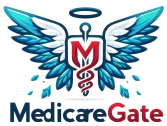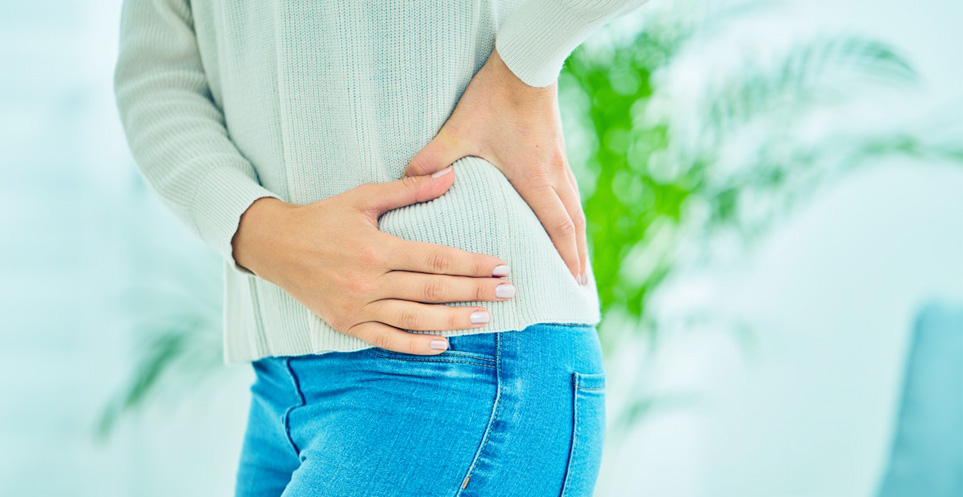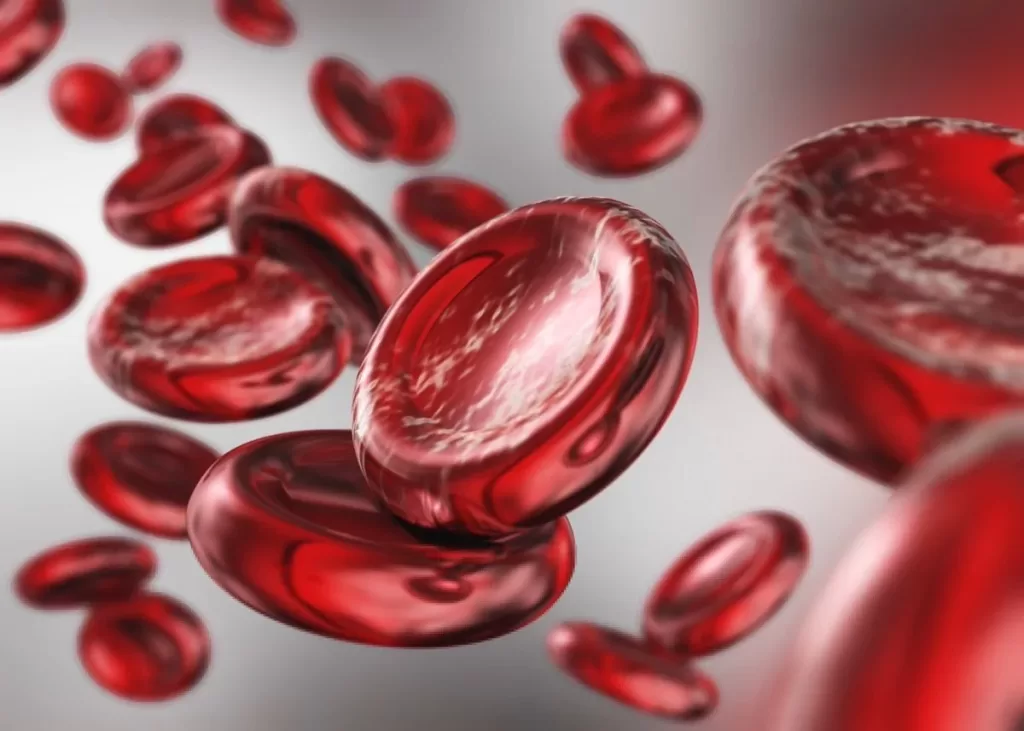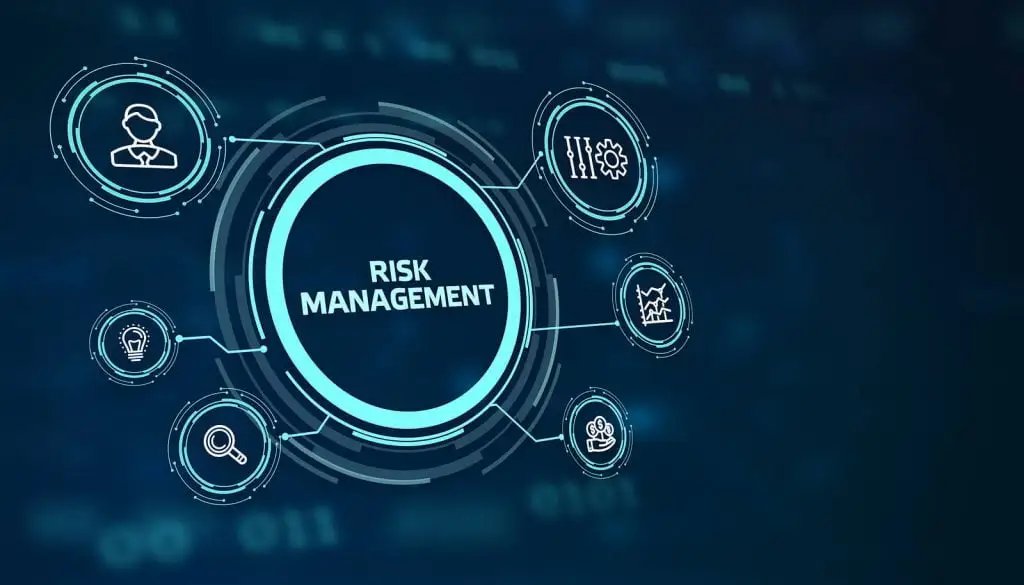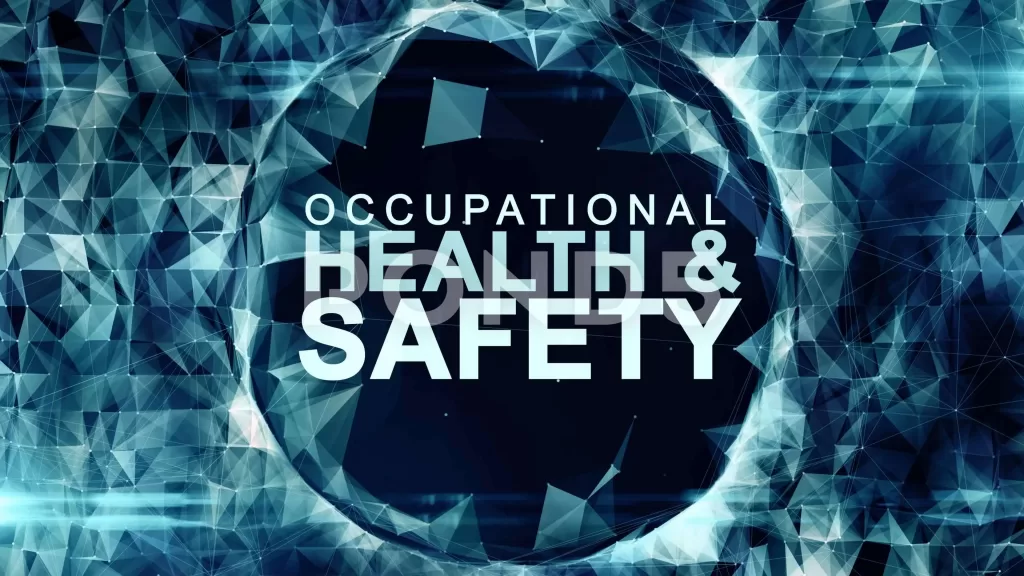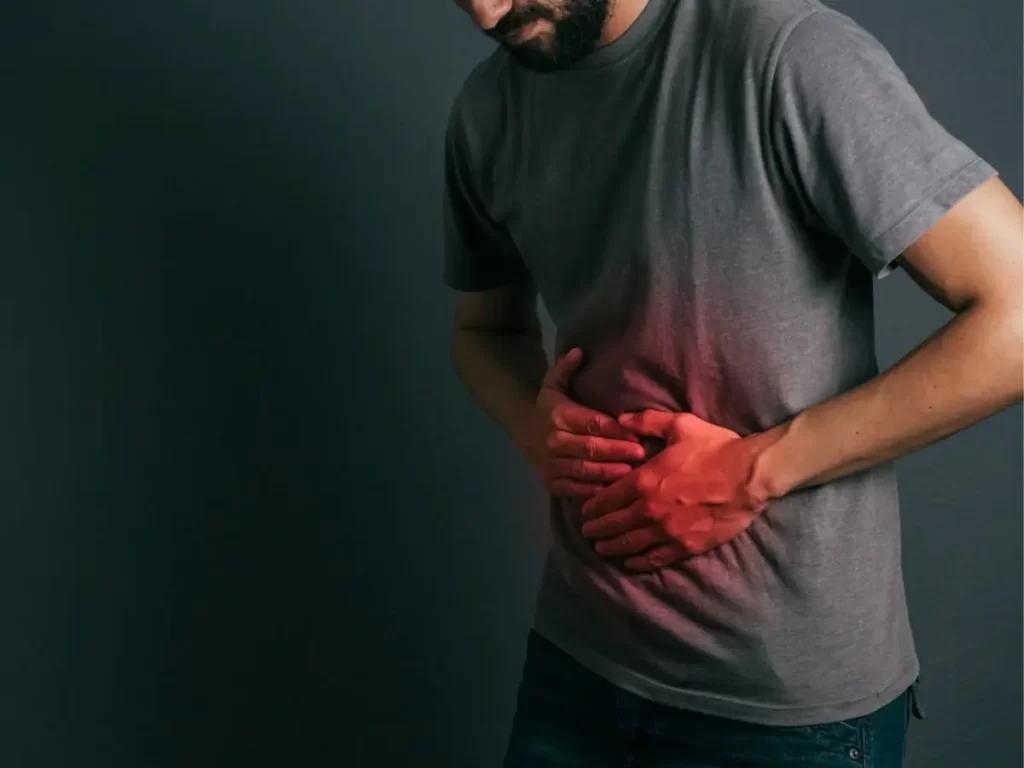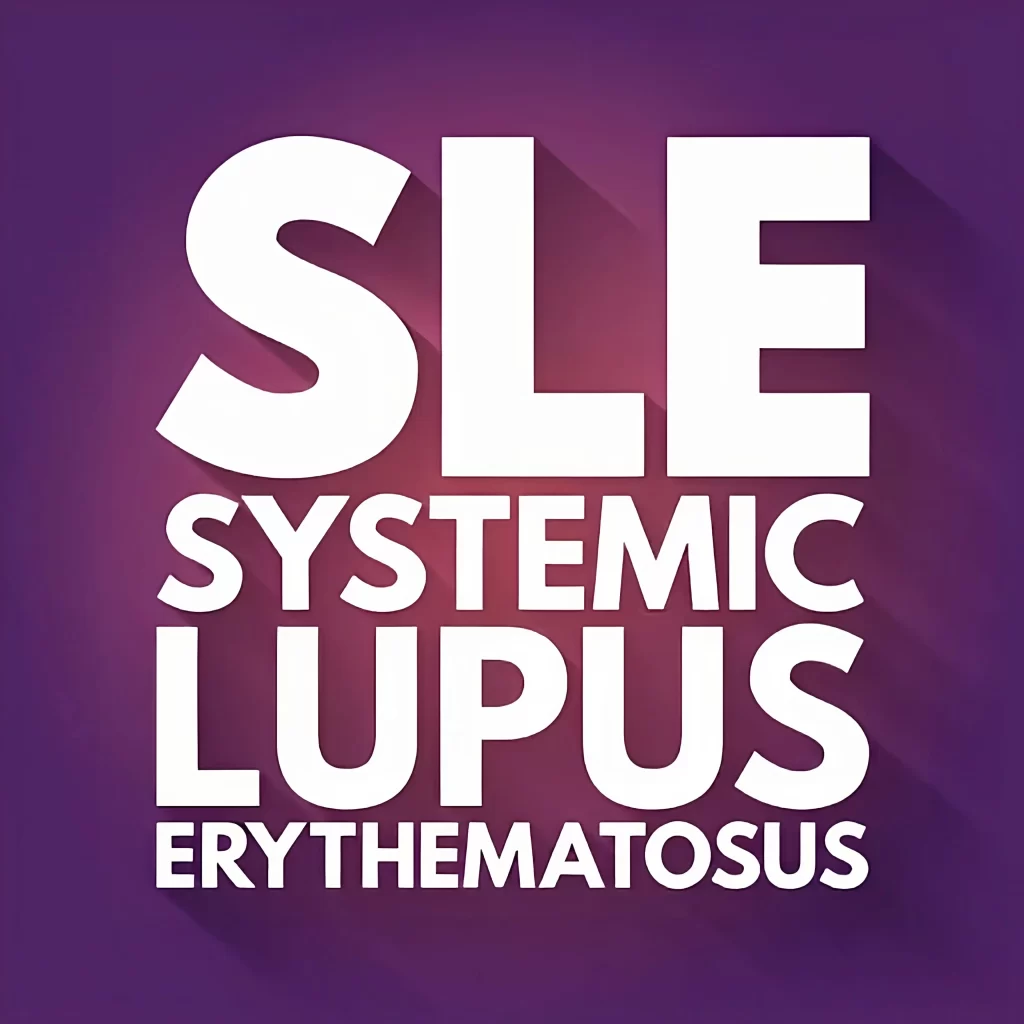Introduction
Pain in the left hip area in female can stem from various causes, ranging from musculoskeletal issues to conditions related to the reproductive system.
Whether you’re dealing with chronic pain or recovering from an injury, hip pain can greatly impact your daily activities and overall quality of life.
Effective diagnosis and treatment of hip pain depend on knowing its precise cause.
The possible causes of pain in left hip area in female, related symptoms, and seeking medical help for appropriate therapy are all covered in this article. Follow along!
Pain in Left Hip Area in Female
Hip pain refers to any pain in or around the hip joint, it can occur immediately over the hip area in the groin, thigh, or knee.
Whatever, the pain that you feel in the hip area is the sign that indicates there is something wrong in your hip.
According to the origin of pain, you have several symptoms including:
- Pain and swelling after repeated exercises.
- Worsen pain during walking or stiffness after moving.
- Discomfort and stiffness, especially upon waking.
- Swollen hip, Fever, and shivery.
- Severe pain after fall or injury.

What Can Cause Hip Pain in a Woman
The pain in left hip area in female occurs due to some factors, including impingement, inflammation, or traumas.
These causes are as follows:
- Hip Arthritis.
- Bursitis.
- Hip Fractures.
- Menopause hip pain.
Hip Arthritis
The most common cause of pain in the left hip area in female is arthritis, which is an inflammation of the joint, specifically the hip joint.
Arthritis has several types such as:
- Osteoarthritis, also known as wear-and-tear arthritis.
- Rheumatoid arthritis is an autoimmune disorder.
The common symptoms due to arthritis are pain besides stiffness and discomfort during walking or sleeping.
Furthermore, medications and physical therapy are used to alleviate pain by stabilizing the muscles and tendons surrounding the hip joint.
Bursitis
Hip bursitis is an inflammation of the bursa, which covers the bony region of the hip bone.
The pain begins sharply and spreads to a big portion of the hip.
Another sign is swelling, warmth, and redness in this location.
Therefore, the doctor recommends:
- Antibiotics can help to minimize infection.
- Painkiller tablets are used to relieve pain.
- A steroid injection into the joint to reduce swelling.
Hip fractures
Hospitalization is necessary for a serious condition like a fractured hip.
This sort of hip pain is caused by osteoporosis in old women or by an accident.
The signs involved acute pain, bruising, and swelling around the hip.
Menopause hip pain
During the menopause stage, females have a variety of joint and bone-related symptoms:
- Low estrogen hormone levels, which have a function in bone density and act as an anti-inflammatory agent, contribute to bone injury and inflammation.
- Metabolism disruption causes weight gain, which has an impact on joints, notably the hip.
- The risk of osteoarthritis increases with age.
As a result, doctors prescribe hormone replacement medication to women going through menopause, in addition to eating omega-3-rich foods, and that continues vitamins and minerals.
Pain in Right Hip Area in Female
The following causes female right hip pain:
- Pelvic floor dysfunction.
- Pregnancy.
- Endometriosis.
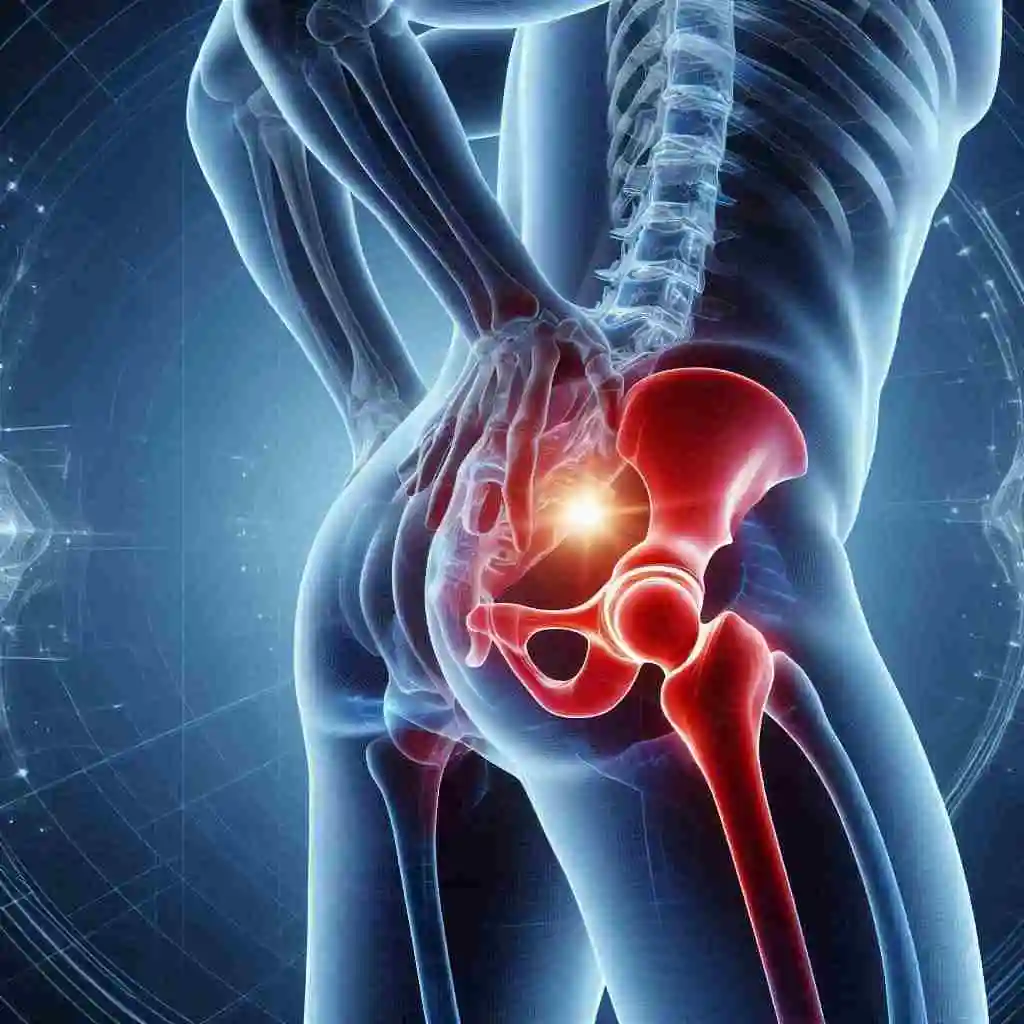
Pelvic Floor Dysfunction
For many causes, most of which are unique to women, the ligaments, muscles, and tissues that made up the pelvic floor may deteriorate. Among these are:
- Age.
- Pregnancy.
- Multiple deliveries due to older ages which have high levels of FSH hormone or taken fertility drugs.
- Vaginal delivery performed with vacuum extractors or forceps.
- Macrosomia or large baby which has weight more than 4000 grams.
- Weaker tissues some women born with issues due to influences of genes affect on her bones, muscles and connective tissue that make her more sustainable to pelvic floor dysfunction.
Right hip pain is one of the primary signs of pelvic floor dysfunction. In addition to:
- Pelvic discomfort.
- Problems with urination and passing feces.
- Pain during sexual intersection.
Pregnancy
Research indicates that hormonal and physiological changes brought on by pregnancy may increase the risk of musculoskeletal problems.
According to one study, which involved 184 women, there is an increased risk of several musculoskeletal diseases, especially during the third trimester of pregnancy.
During this period, an increase in musculoskeletal pain links to weight gain and fluid retention.
Furthermore, hormonal fluctuations like the release of the relaxin hormone near the end of the trimester cause the pelvis to enlarge in order to support the growing baby.
Concurrently, the hormone relaxin softens the ligaments and tendons, preparing the pelvis for delivery.
This causes hip and pelvic discomfort by putting additional pressure on those areas.
Additionally, Pregnant women often experience hip pain in the second or third trimester due to increased mechanical strain on the hip joints during pregnancy.
Endometriosis
Endometriosis is a chronic issue in which tissue similar to the lining of the uterus grows outside the uterus.
Thus, this leads to inflammation in nerves as sciatic nerves surrounding the pelvic region, causing discomfort in one side of the body back to the right hip, accompanied by several symptoms like:
- Chronic pelvic pain
- Heavy menstrual cycle.
- Tiredness.
- Pain during urination or making poo.
- Nausea.
Sudden Sharp Pain in Left Hip Comes and Goes
If you have abrupt, severe pain in your left hip, it may be due to:
- Osteoporosis is the primary reason.
- Labral tears cause injury to the cartilage ring that surrounds the hip joint.
- Osteonecrosis, also known as avascular necrosis, occurs when hip bone tissue dies due to a lack of blood supply.
- Femoroacetabular impingement is a morphological problem of the hip joints caused by the growth of extra bones, resulting in joint stiffness and pain.
Sudden Hip Pain Without Injury
There’s no explanation for a sudden hip injury without trauma, however if you’re having hip pain, it could be related to the following:
- Tendonitis is a severe inflammatory condition resulting from prolonged physical activity that affects the tendons that connect muscles and hip bones.
- Hip flexor strain occurs when the muscles that support the hip are stretched, resulting in acute pain, stiffness, edema, and weakening.
- Trauma to the foot or ankle can cause excessive pressure on the hip, negatively impacting the body.
Sleeping Positions for Hip Pain While Pregnant
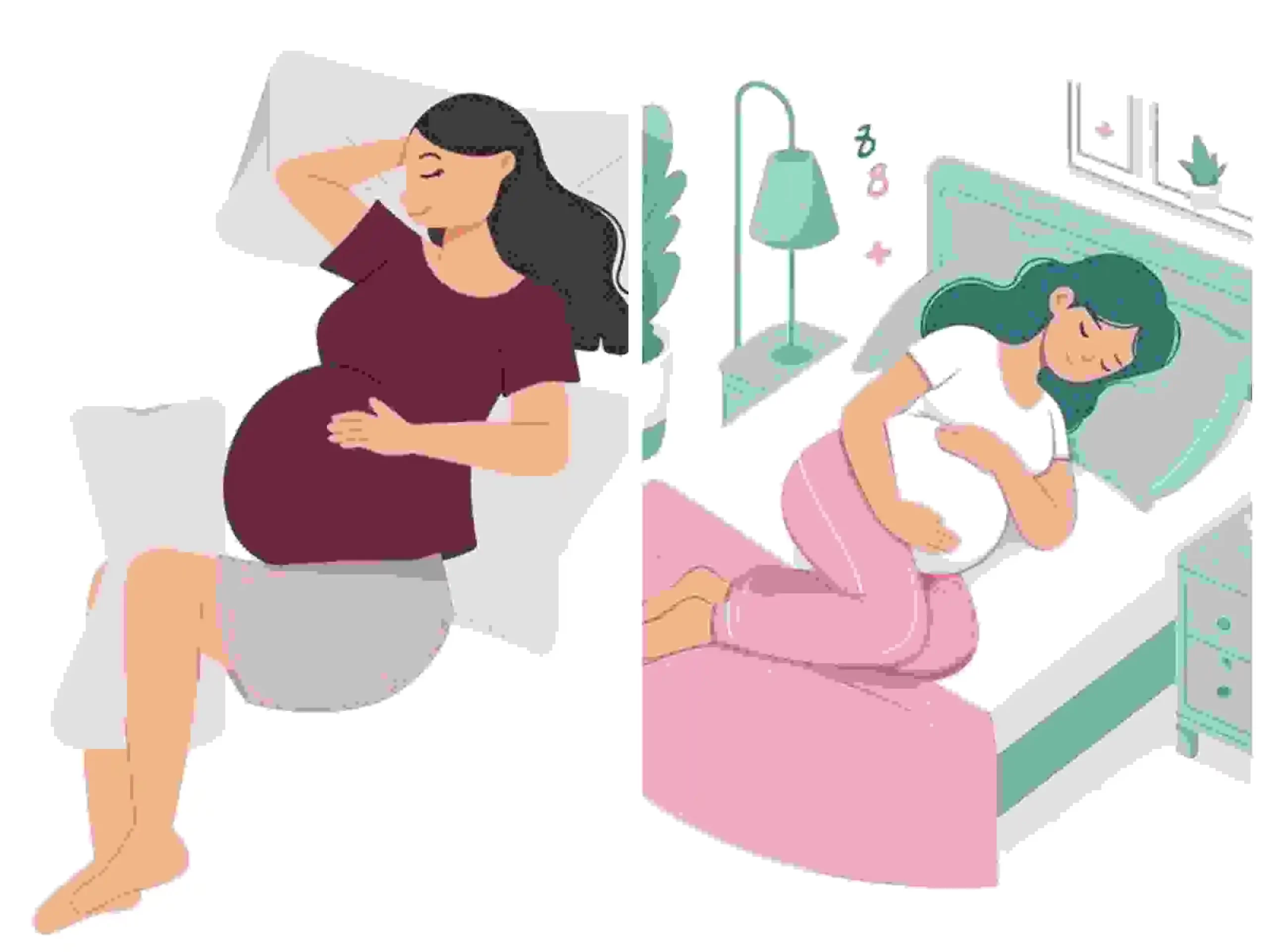
As your baby develops, it may become more difficult to sleep comfortably.
In order to reduce the strain on your hips, you must sleep in the proper positions follows:
- Sleeping on your side to ease the weight of your uterus on your back.
- Lying on your side, bend your knees.
- A pregnant pillow is designed for offering support during pregnancy.
Summary
Pain in left hip area in female is a common issue that occurs due to several causes, including hip arthritis, bursitis, hip fractures, and menopause.
However, sometimes there’s pain in the right hip that is related to some factors involving pelvic floor dysfunction, pregnancy, and endometriosis.
The sudden Pain in the left hip may be caused by osteoporosis, avascular necrosis, and femoroacetabular impingement, but if you have acute pain without injuries, it may be because of other reasons.
Finally, if you are pregnant, you must have an appropriate sleeping position to reduce the pressure on your hips.
References
- NHS. (n.d.-b). NHS choices. From NHS
- Ceprnja, D., Chipchase, L., Fahey, P., Liamputtong, P., & Gupta, A. (2021, July 15). Prevalence and factors associated with pelvic girdle pain during pregnancy in Australian women: A cross-sectional study. Spine. From PubMed
- Saar, T. D., Pacquée, S., Conrad, D. H., Sarofim, M., Rosnay, P. D., Rosen, D., Cario, G., & Chou, D. (2018). Endometriosis involving the sciatic nerve: A case report of isolated endometriosis of the sciatic nerve and review of the literature. Gynecology and minimally invasive therapy. From PubMed
- Femoroacetabular impingement – sciencedirect. (n.d.-a). From Science direct
- Banerjee, P., & McLean, C. R. (2011, March 16). FEMOROACETABULAR impingement: A review of diagnosis and management. Current reviews in musculoskeletal medicine. From PubMed
- NHS. (n.d.-a). NHS choices. From NHS
- Davis, D. (2024, January 4). Sciatica. StatPearls [Internet]. From National library of Medicine
- Menopause Basics: Office on Women’s Health. OASH | Office on Women’s Health. (n.d.). Women health
- U.S. Department of Health and Human Services. (n.d.). What causes pelvic floor disorders (pfds)?. Eunice Kennedy Shriver National Institute of Child Health and Human Development. From NIH
- World Health Organization. (n.d.-d). Endometriosis. World Health Organization.
- Kesikburun, S., Güzelküçük, Ü., Fidan, U., Demir, Y., Ergün, A., & Tan, A. K. (2018, November 19). Musculoskeletal pain and symptoms in pregnancy: A descriptive study. Therapeutic advances in musculoskeletal disease. From PubMed
